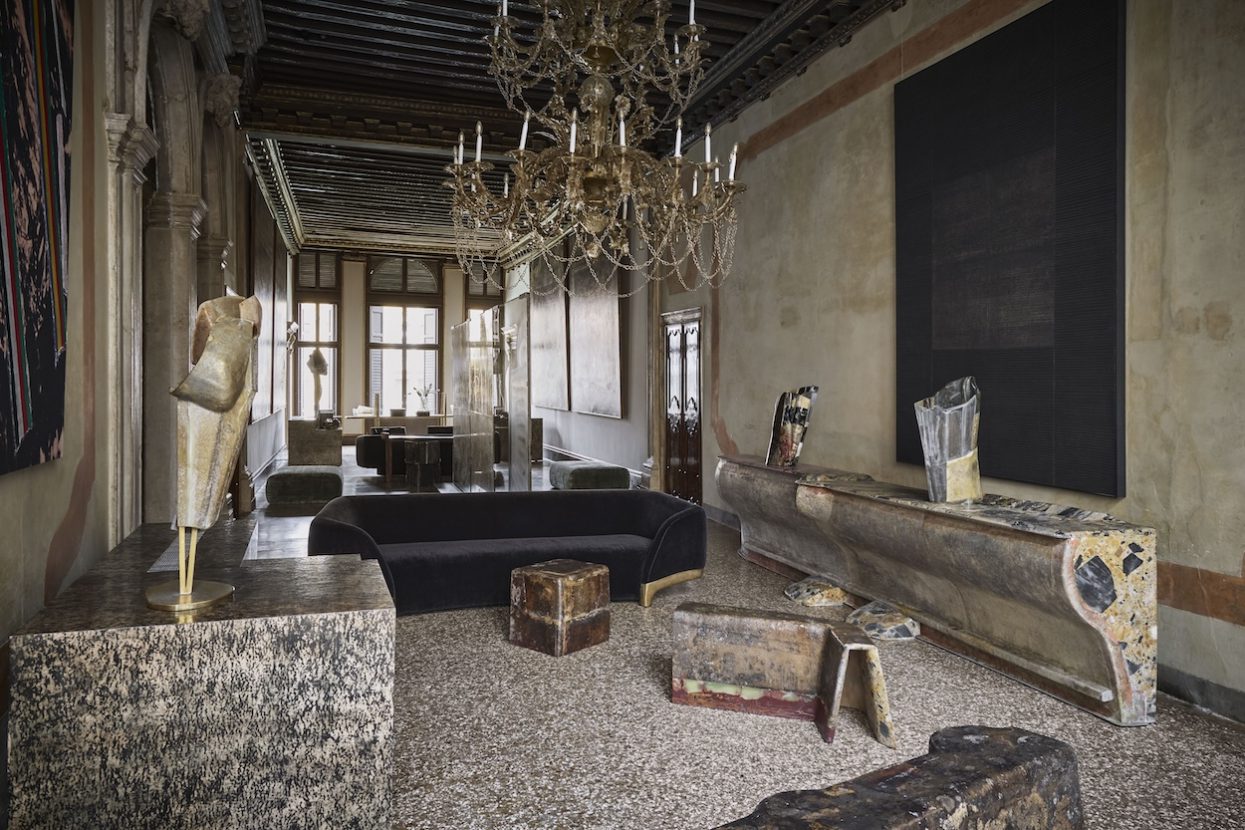Palazzo Giustinian Lolin, a Baroque-style palace facing one of Venice’s most picturesque waterways, has weathered the mark of many characters. Built in the 15th century, reconstructed shortly after by Venetian architect Baldassare Longhena to use columns of all three classical orders, and now home to the European music foundation of Ugo and Olga Levi on the second floor, the palazzo has retained centuries-old details like Murano glass chandeliers and cyan silk panels. “It’s full of a material history with generations of architectural references built on top of each other,” says the architect Vincenzo de Cotiis, who found kinship between the palazzo’s history and his own practice, which involves layering disparate materials both in historical interiors and on sculptural objects to poetically explore the passage of time.
That may explain why de Cotiis moved into the first floor—and inaugurated his foundation there, too. Coinciding with the Venice Art Biennale’s 60th edition, the Vincenzo de Cotiis Foundation aims to enhance the city’s creative sphere with exhibitions and publications that advance our understanding of contemporary art and design. It starts with “Archaeology of Consciousness Venice,” which features a trio of monumental arches installed within the palazzo’s courtyard. “I wanted to show something that connected back to the city,” de Cotiis tells Surface, explaining that arches symbolize the architectural development of La Serenissima. They feature recycled fiberglass, ancient stone such as Rhodonite, and elements of Murano glass, layered atop and around one another in an organic, seemingly effortless style.




